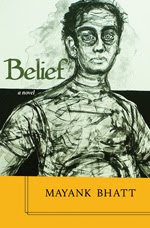
For some inexplicable reason I have not yet read anything by Bharati Mukherjee. It’s one of those things. You want to read the author’s work, but aren’t sure which is the most representative work.
Last week, almost by happenstance, I was introduced by Joyce Wayne (the course coordinator of Sheridan Institute of Technology and Advanced Learning’s Program of Canadian Journalism for Internationally Trained Writers) to Bharati Mukkerjee’s writing through an essay.
The essay Imagining Homelands forms an important part of Letters of Transit: Reflections on Exile, Identity, Language and Loss, edited by Andre Aciman, an Egyptian-American writer. Other contributors include the redoubtable Edward Said.
The counselors at the immigration services always say it with passion, and occasionally with unjustifiable conviction: “You have to fit in. Neutralize your accent. Offer a firm handshake. Adopt the Canadian way.”
To most immigrants this is a harangue, a diatribe. Their reaction is a mix of bemusement, anger, exasperation, resignation.
It takes many, long, painful years before the immigrant settles in her new environment. And then again, she almost never does. She continues to remain uncertain, diffident and tenuous, for the rest of her life.
In Imagining Homelands, Bharati Mukherjee suggests that the immigrant is either like her sister, someone who fiercely retains her ethnicity, or like Mukherjee, a global soul of the global village, at home in Brooklyn, New York, as in Park Street, Kolkata.
The reality is slightly different. I don’t think the delineation is so complete. The immigrant is seldom the two separate entities. She is almost always both: The sister, who retains her roots, and Mukherjee, who loses hers. She is embarrassed that her kitchen smells of spices but does not change the way she cooks. She will, on the other hand, change the way she dresses because her sari is impractical in her new environment.
Mukherjee’s categorization is the process of leaving one’s home country and adopting a new country is telling: Expatriation, exile, immigration, and repatriation. Of these categories, it is only the immigrant who is tolerated. The expat doesn’t need the approval of the host. The exile couldn’t care less. The expatriate is always the enemy, often overtly termed so by the establishment.
The immigrant is the most loved because she is willing to be the charwoman. Despite being qualified as a medical librarian. It’s the immigrant who changes herself and yet retains her identity, to ultimately change her new environment.
Mukherjee describes it eloquently: “The immigrant calls to mind crowded tenements, Ellis Island, sweatshops, accents, strange foods, taxicab drivers, bizarre holidays, strange religions, unseemly ethnic passions.”
While a lot what she describes is relevant to the immigrant, it is mainly applicable to the educated immigrant from a slightly well-heeled background. I wonder – and I may be wrong – on how much of what she writes is really applicable from the Sikh immigrant who comes to Mississauga from the interior Punjab and lives the rest of his life in drudgery of hard labour. He is trapped. He doesn’t have a choice.
For the educated and the well-heeled immigrant, it’s only a matter of time before she succeeds in economically integrating into her new milieu. She may choose not to integrate culturally.
The labourer does not have that choice, ever.




really good than k u for sharing this!!!!
ReplyDelete